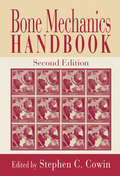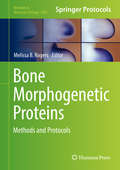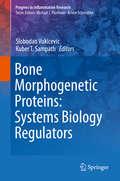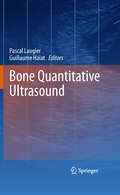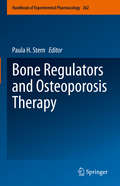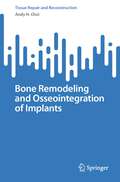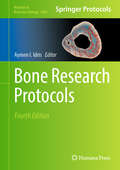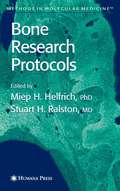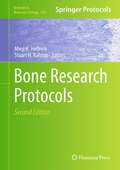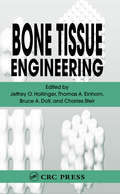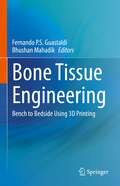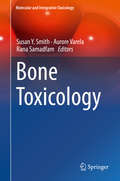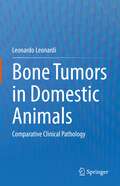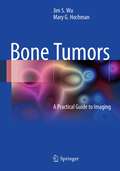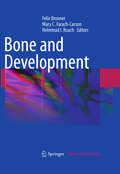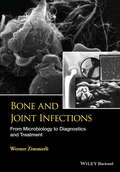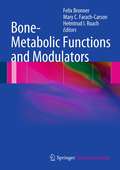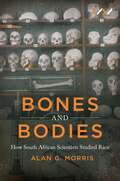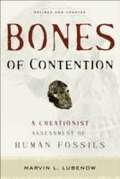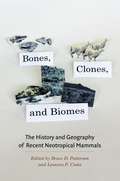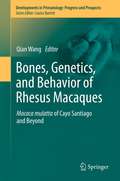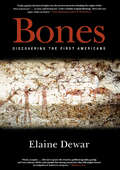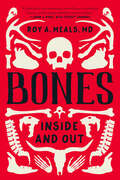- Table View
- List View
Bone Mechanics Handbook
by Stephen C. CowinThis second edition of the Bone Mechanics Handbook summarizes the current understanding of bone mechanics with comprehensive coverage of the histology, physiology, and the cell and molecular biology of the bone. It is updated with the most recent advances on mechanical properties of the bone, most notably of cancellous bone, and the streaming poten
Bone Morphogenetic Proteins: Methods and Protocols (Methods in Molecular Biology #1891)
by Melissa B. RogersThis volume provides methods to study bone morphogenetic proteins (BMPs) and BMP modulators in cell culture, in both invertebrate and vertebrate animal models, and for therapeutic applications. Chapters guide the reader in the use of primary and immortalized cell lines, methodologies that exploit transcription and receptor mechanisms, newly developed animal models using nematodes, flies, amphioxus, frogs, zebrafish, and genetically engineered mice, and pre-clinical approaches to understanding BMP function in bone regeneration, heterotopic ossification, and cancers. Written in the highly successful Methods in Molecular Biology series format, chapters include introductions to their respective topics, lists of the necessary materials and reagents, step-by-step, readily reproducible laboratory protocols, and key tips on troubleshooting and avoiding known pitfalls. Authoritative and cutting-edge, Bone Morphogenetic Proteins: Methods and Protocols aims to ensure successful results in the further study of this vital field.
Bone Morphogenetic Proteins: Systems Biology Regulators (Progress in Inflammation Research)
by Slobodan Vukicevic Kuber T. SampathThis book focuses on the salient features of the biology of Bone Morphogenetic Proteins and the advances in our understanding of their structure and function and of downstream signaling, as well as their governance in systems biology from bone and dentin to kidney, cancer, diabetes, iron homeostasis and angiogenesis, including rare musculoskeletal disorders. BMPs, also referred to as growth and differentiation factors, are members of the TGF-beta superfamily and are highly conserved from fruit flies to mammals and are responsible for the formation of practically every organ during embryo development and involved in adult tissue injury and repair. BMPs establish their extracellular gradient by interacting with their respective antagonists and regulate their function through SMAD-dependent down-stream signaling effector genes. This volume is aimed at scientists and professionals dealing with metabolic disorders, nutrition, systems biology diseases, rare musculoskeletal conditions, and disorders related to iron metabolism, including anemia of chronic disease, hereditary hemochromatosis and beta thalassemia.
Bone Quantitative Ultrasound
by Guillaume Haïat Pascal LaugierQuantitative ultrasound (QUS) of bone is a relatively recent research field. The research community is steadily growing, with interdisciplinary branches in acoustics, medical imaging, biomechanics, biomedical engineering, applied mathematics, bone biology and clinical sciences, resulting in significant achievements in new ultrasound technologies to measure bone, as well as models to elucidate the interaction and the propagation of ultrasonic wave in complex bone structures. Hundreds of articles published in specialists journals are accessible from the Web and from electronic libraries. However, no compilation and synthesis of the most recent and significant research exist. The only book on QUS of bone has been published in 1999 at a time when the propagation mechanisms of ultrasound in bone were still largely unknown and the technology was immature. The research community has now reached a critical size, special sessions are organized in major international meetings (e.g., at the World Congress of Biomechanics, the annual meetings of the Acoustical Society of America, International Bone Densitometry Workshop, etc...). Consequently, the time has come for a completely up to date, comprehensive review of the topic. The book will offer the most recent experimental results and theoretical concepts developed so far and is intended for researchers, graduate or undergraduate students, engineers, and clinicians who are involved in the field. The central part of the book covers the physics of ultrasound propagation in bone. Our goal is to give the reader an extensive view of the mathematical and numerical models as an aid to understand the QUS potential and the types of variables that can be determined by QUS in order to characterize bone strength. The propagation of sound in bone is still subject of intensive research. Different models have been proposed (for example, the Biot theory of poroelasticity and the theory of scattering have been used to describe wave propagation in cancellous bone, whereas propagation in cortical bone falls in the scope of guided waves theories). An extensive review of the models has not been published so far. We intend in this book to present in details the models that are used to solve the direct problem and strategies that are currently developed to address the inverse problem. This will include analytical theories and numerical approaches that have grown exponentially in recent years. Most recent experimental findings and technological developments will also be comprehensively reviewed.
Bone Regulators and Osteoporosis Therapy (Handbook of Experimental Pharmacology #262)
by Paula H. SternThis volume is designed to provide an understanding of current and potential therapies for osteoporosis. The opening chapter introduces the cells of bone and their interactions. Several following chapters describe factors affecting bone including systemic hormones with significant effects on bone, and local mediators including growth factors, prostaglandins, cytokines and chemokines. Topics that have commanded particular attention recently are calcium, FGF-23, nervous system bone interactions. Drugs that cause bone loss provide important information on mechanism as well as therapeutic considerations. An overview of the genetics of bone disorders and a discussion of the pathophysiology of osteoporosis establish the clinical context. The final chapters discuss current and potential osteoporosis treatments.
Bone Remodeling and Osseointegration of Implants (Tissue Repair and Reconstruction)
by Andy H. ChoiThis book provides an insight into the latest advances in bone fracture healing and remodeling algorithm and their incorporation into patient-specific finite element models and the use of machine learning and artificial intelligence to predict the bone regeneration and osseointegration process with a certain degree of accuracy. It also examines the applications of numerical models to simulate the fracture healing process, which may prove to be advantageous in determining the optimal mechanical-based treatment or reconstruction after an accident or illness. This book is aimed at medical and dental professionals who are involved in implantology and tissue engineering such as dentists, oral and maxillofacial surgeons, orthopedic surgeons, students, and researchers.
Bone Research Protocols (Methods in Molecular Biology #2885)
by Aymen I. IdrisThis third edition volume expands on the previous editions with new chapters and updated discussions on the latest advancements in the fields of musculoskeletal research and cancer-induced bone disease (CIBD). The chapters in this book are organized in to six parts and cover a wide range of established and new research procedures. Part One looks at methods for isolation, generation and analysis of osteoclasts, stem cells, circulating tumor cells, and bone marrow adipocytes. Part Two explores biochemical and molecular analysis procedures for isolation, purification, and quantification or mRNA and DNA in bone cells. Part Three focuses on ex vivo models of tissues, organs, and co-culture systems for bone and cancer cells, and Part Four presents various cancer related in vivo models of primary bone and secondary cancers in the skeleton. Part 5 discusses the frequently used bone microscopical and imaging analytical techniques, such as bone histomorphometry, immunostaining, and MicroCT scanning of bone. Finally Part Six talks about applications of GWAS, EWAS, systematic review, and meta-analysis. Written in the highly successful Methods in Molecular Biology series format, chapters include introductions to their respective topics, lists of the necessary materials and reagents, step-by-step, readily reproducible laboratory protocols, and tips on trouble3.shooting and avoiding known pitfalls. Cutting-edge and comprehensive, Bone Research Protocols, Third Edition is a valuable resource for all researchers, scientists, and clinicians who are interested in learning more about this important and developing field.
Bone Research Protocols (Methods in Molecular Medicine #80)
by Miep H. Helfrich Stuart H. RalstonThe past decade has witnessed the discovery of many genes with profound effects on bone. In Bone Research Protocols, recognized authorities with extensive hands-on experience present a wide-ranging catalog of laboratory techniques that will help researchers to investigate the mechanisms by which these genes affect bone mass and strength. Described in step-by-step detail, these readily reproducible methods cover such topics as the isolation and culture of bone cells, the preparation of bone tissue for histological and ultrastructural analysis, methods for the measurement of bone strength and for mechanical studies, and how to use digital imaging techniques in the analysis of bone. Though in vitro methods receive central attention, there are also protocols for in vivo analyses of bone formation and resorption. <P><P> State-of-the-art and highly practical, Bone Research Protocols offers both beginning and advanced laboratory researchers a major compendium of well-established techniques for studying bone cell function and metabolism.
Bone Research Protocols, 2nd Edition (Methods in Molecular Biology #816)
by Miep H. Helfrich Stuart H. RalstonStudies over the past decade have continued to bring tremendous advances to our understanding of bone biology. New pathways have been discovered and expanded our knowledge of the ways in which genes and gene products affect bone cells and thereby bone mass and bone strength. In Bone Research Protocols, Second Edition, expert researchers in the field detail many methods commonly used to study bone biology. Focusing mainly on in vitro methods, this volume gives techniques for isolation, culture and functional analysis of all bone cell types and details a range of imaging methods, including light and ultrastructural microscopy and live cell imaging. Some important in vivo techniques are included, such as analysis of bone resorption and imaging using X rays, fluorescent or luminescent techniques. Methods for study of proteins and nucleic acid are included and methods for analysis of bone composition, measurement of bone strength, and response to mechanical stimulation are described. Written in the highly successful Methods in Molecular Biology™ series format, chapters include introductions to their respective topics, lists of the necessary materials and reagents, step-by-step, readily reproducible laboratory protocols, and key tips on troubleshooting and avoiding known pitfalls.<P><P> Authoritative and practical, Bone Research Protocols, Second Edition seeks to aid scientists in the bone field to establish new techniques in their laboratories.
Bone Rooms: From Scientific Racism to Human Prehistory in Museums
by Samuel J. RedmanIn the bone rooms of the Smithsonian Institution and other museums in the late nineteenth century, a scientific revolution was unfolding, as collectors engaged in a global competition to recover the best human skeletons, mummies, fossils. Study of these remains led to the discrediting of racial theory and the search for human origins and evolution.
Bone Tissue Engineering
by Jeffrey O. Hollinger Thomas A. Einhorn Bruce A. Doll Charles SfeirFocusing on bone biology, Bone Tissue Engineering integrates basic sciences with tissue engineering. It includes contributions from world-renowned researchers and clinicians who discuss key topics such as different models and approaches to bone tissue engineering, as well as exciting clinical applications for patients. Divided into four sections, t
Bone Tissue Engineering: Bench to Bedside Using 3D Printing
by Fernando P. S. Guastaldi Bhushan MahadikThis book provides a comprehensive overview of the state-of-the-art research as well as current challenges and strategies to reconstruct large bone defects employing 3D printing technology. Various topics covered include different 3D printing technologies that can be applied for bioengineering bone, the aspects of basic bone biology critical for clinical translation, tissue engineering platforms to investigate the bone niche microenvironment, the pathway to clinical translation, and regulatory hurdles.Bone Tissue Engineering: State-of-the-Art in 3D Printing is an ideal book for students and researchers interested in learning more about the latest advances in employing different 3D printing technologies for bone tissue engineering.
Bone Toxicology (Molecular and Integrative Toxicology)
by Susan Y. Smith Aurore Varela Rana SamadfamThe content of this book is intended to provide the toxicologist in drug development in the pharmaceutical and biotechnology industries with a broad understanding of bone and its interactions with other organ systems in safety assessments. The book is divided into three parts. The first part describes our current understanding of bone biology and its primary regulatory pathways. Additional chapters address regulatory and study design considerations for incorporating bone end points in toxicology studies, with special consideration being given to juvenile toxicology studies. This is intended to address recent regulatory requirements to evaluate skeletal development for drugs in development for pediatric populations. The second part of the book describes the principal techniques and methods used in bone research; understanding how these end-points are derived is fundamental to their appropriate application. These first two parts of the book provide the background and the means to develop the concepts in part three which describes bone and its interaction with other organ systems. The unique series of chapters in part three, contributed to by key leaders in their respective fields and in bone research, provides a comprehensive collective work. Although constantly evolving, the crosstalk and interaction of the skeleton with several organ systems is now recognized and well documented, such as for the reproductive system, muscle and kidney, while our understanding of the interaction with other organ systems, such as the immune system and CNS, is in its infancy. Recent work highlights the key role of the skeleton in the regulation of energy metabolism and the impact this has on research in metabolic diseases such as obesity and diabetes. The hope is that this book will enlighten many and encourage more to explore the impact of new compounds on the skeleton in the development of effective and safe drugs.
Bone Tumors in Domestic Animals: Comparative Clinical Pathology
by Leonardo LeonardiThis book comparatively examines the etiopathogenetic, clinical-pathological, diagnostic and therapeutic strategies of the main bone tumors of domestic animals. The book also includes a description of the most significant aspects of macroscopic, microscopic, immunohistochemical, instrumental, diagnostic imaging and molecular biology aspects of spontaneous bone tumors in Veterinary Medicine, with also interspecies comparative aspects, including the human one. Last but not least, the book provides an overview of the new diagnostic and therapeutic frontiers related to the approach to animal bone tumors. The book serves as essential reading for professionals, researchers and students who work or want to tackle three paths in the field of comparative veterinary bone oncology.
Bone Tumors: A Practical Guide to Imaging
by Jim S. Wu Mary G. HochmanBone Tumors: A Practical Guide to Imaging is a concise guide to common tumors encountered by physicians in daily practice. The authors make use of high-yield facts, differential diagnoses, and extensive radiological images to introduce a wide range of bone tumors, focusing on their classic appearance and location in order to provide readers with a solid foundation of knowledge for tumor recognition and evaluation. The book includes explanations of methods for properly evaluating bone lesions, common imaging modalities used for diagnosis, and individual chapters covering different classes of benign and malignant tumors, including cartilage, osseous, fibrous, miscellaneous, and bone metastases. The book concludes with a comprehensive selection of 75 unknown cases, including brief clinical history, description of imaging findings, best differential diagnoses, and short discussion revealing the most likely diagnosis. Bone Tumors is an ideal resource for practicing physicians and residents in radiology, orthopedic surgery, pathology, and primary care. About the Authors Jim S. Wu, MD, is Assistant Professor of Radiology at Beth Israel Deaconess Medical Center, Harvard Medical School. Mary G. Hochman, MD, is Chief of the Section of Musculoskeletal Imaging and Assistant Professor of Radiology at Beth Israel Deaconess Medical Center, Harvard Medical School.
Bone and Development (Topics in Bone Biology #6)
by Mary C. Farach-Carson Felix Bronner Helmtrud I. RoachThis is a sixth volume in a series of reviews, centered on a single major topic within the field of osteopathy. The book is an appropriate mechanism for advancing knowledge in the field to researchers, clinicians and others involved in the bone field. This work intends to look at the role bone development within the field of pediatrics, covering all problematic aspects from basic skeletal growth to tooth mineralization. To understand tissue development requires combining embryological and histological knowledge with the increasing information becoming available from molecular and genetic studies. Development is characterized by the expression of genes, their subsequent silencing and the expression of other genes. Disease, especially disease progression, is equally characterized by new gene expression that is then transmitted to daughter cells, with the silencing of other genes. In both instances these sequences are the result of the interaction between the genome and the epigenome, i.e. between a very stable set of structures and rapidly changing environmental factors.
Bone and Joint Infections
by W. ZimmerliBone and Joint Infections is the first book to take a multidisciplinary approach to covering the causes and treatment of osteomyelitis and septic arthritis. Correct and rapid diagnosis of bone and joint infection requires the input of a variety of specialists, and Bone and Joint Infection takes a similarly collaborative and comprehensive approach, including chapters from a diverse group of clinicians, researchers, and surgeons.Covering both the basic microbiology and clinical aspects of bone and joint infection, this book will be a valuable resource both for researchers in the lab and for physicians and surgeons seeking a comprehensive reference on osteomyelitis and septic arthritis.
Bone-Metabolic Functions and Modulators (Topics in Bone Biology #7)
by Mary C. Farach-Carson Felix Bronner Helmtrud I. RoachRecent research, which Bone- Metabolic Function and Modulators expands on, has added new support to the idea that bone not only serves as a support system, but also functions as an integrating organ, with a significant regulatory role for lipid and energy metabolism. Links between physical activity and the skeleton are also becoming increasingly clear. This fully illustrated volume contains up-to-date information on the metabolic role of the skeleton and what this can mean for the treatment of metabolic as well as skeletal and auditory diseases. Bone- Metabolic Function and Modulators is of particular interest to clinician scientists, clinical and basic bone researchers, orthopedists, endocrinologists, internists, dentists, nurse practitioners, medical and dental residents and physiotherapists as well as students of the musculoskeletal system. Bone- Metabolic Function and Modulators is the seventh volume in the series Topics in Bone Biology, edited by Felix Bronner and Mary C. Farach-Carson. Other titles in this series:- Bone Formation Bone Resorption Engineering of Functional Skeletal Tissues Bone and Osteoarthritis Bone and Cancer Bone and Development Bone- Metabolic Function and Modulators is of particular interest to clinician scientists, clinical and basic bone researchers, orthopedists, endocrinologists, internists, dentists, nurse practitioners, medical and dental residents and physiotherapists as well as students of the musculoskeletal system. Bone- Metabolic Function and Modulators is the seventh volume in the series Topics in Bone Biology, edited by Felix Bronner and Mary C. Farach-Carson. Other titles in this series:- Bone Formation Bone Resorption Engineering of Functional Skeletal Tissues Bone and Osteoarthritis Bone and Cancer Bone and Development Bone- Metabolic Function and Modulators is of particular interest to clinician scientists, clinical and basic bone researchers, orthopedists, endocrinologists, internists, dentists, nurse practitioners, medical and dental residents and physiotherapists as well as students of the musculoskeletal system. Bone- Metabolic Function and Modulators is the seventh volume in the series Topics in Bone Biology, edited by Felix Bronner and Mary C. Farach-Carson. Other titles in this series:- Bone Formation Bone Resorption Engineering of Functional Skeletal Tissues Bone and Osteoarthritis Bone and Cancer Bone and Development
Bones and Bodies: How South African Scientists Studied Race
by Alan G MorrisAlan G. Morris critically examines the history of evolutionary anthropology in South Africa, uncovering the often racist philosophical motivations of these physical anthropology researchers and the discipline itselfSouth Africa is famed for its contribution to the study of human evolution. In Bones and Bodies Alan G. Morris takes us back over the past century of anthropological discovery in South Africa and uncovers the stories of the individual scientists and how they contributed to our knowledge of the peoples of southern Africa, both ancient and modern. Not all of this history is one which we should feel comfortable with, as much of the earlier anthropological studies have been tainted with the tarred brush of race science. Morris critically examines the work of Raymond Dart, Thomas Dreyer, Matthew Drennan, and Robert Broom who all described their fossil discoveries with the mirror of racist interpretation, as well as the life and times in which they worked.Morris also considers how modern anthropology tried to rid itself of the stigma of these early racist accounts. In the 1960s and 1970s, Ronald Singer and Phillip Tobias introduced modern methods into the discipline that jettisoned much of what the public wished to believe about race and human evolution. Modern methods in physical anthropology rely on sophisticated mathematics and molecular genetics but are difficult to translate and sometimes fail to challenge preconceived assumptions.In an age where the authority of the expert and empirical science is questioned, this book shows the battle facing modern anthropology in how to explain science in a context that seems to be at odds with life experience. In this highly accessible insider account, Morris examines the philosophical motivations of these researchers and the discipline itself. Much of the material draws on old correspondence and interviews as well as from published resources.
Bones of Contention: A Creationist Assessment of Human Fossils
by Marvin L. LubenowAttending to the exuberance of evolutionists, Marvin L. Lubenow seeks to show that fossils do more to disprove evolutionary theory than otherwise. In Bones of Contention, Lubenow offers scholars and laypeople alike a readable argument for the creationist view of the origins of humankind that addresses all angles of the issue, and answers all of their tough questions. The new edition has thoroughly updated and revised material to reflect years of evolutionist theory and modern paleoanthropology.
Bones, Clones, and Biomes: The History and Geography of Recent Neotropical Mammals
by Bruce D. Patterson and Leonora P. CostaAs explorers and scientists have known for decades, the Neotropics harbor a fantastic array of our planet’s mammalian diversity, from capybaras and capuchins to maned wolves and mouse opossums to sloths and sakis. This biological bounty can be attributed partly to the striking diversity of Neotropical landscapes and climates and partly to a series of continental connections that permitted intermittent faunal exchanges with Africa, Antarctica, Australia, and North America. Thus, to comprehend the development of modern Neotropical mammal faunas requires not only mastery of the Neotropics’ substantial diversity, but also knowledge of mammalian lineages and landscapes dating back to the Mesozoic.Bones, Clones, and Biomes offers just that—an exploration of the development and relationships of the modern mammal fauna through a series of studies that encompass the last 100 million years and both Central and South America. This work serves as a complement to more taxonomically driven works, providing for readers the long geologic and biogeographic contexts that undergird the abundance and diversity of Neotropical mammals. Rather than documenting diversity or distribution, this collection traverses the patterns that the distributions and relationships across mammal species convey, bringing together for the first time geology, paleobiology, systematics, mammalogy, and biogeography. Of critical importance is the book’s utility for current conservation and management programs, part of a rapidly rising conservation paleobiology initiative.
Bones, Genetics, and Behavior of Rhesus Macaques: Macaca Mulatta of Cayo Santiago and Beyond (Developments in Primatology: Progress and Prospects)
by Qian WangForeword by Phillip V. Tobias The introduction of rhesus macaques to Cayo Santiago, Puerto Rico in 1938, and the subsequent development of the CPRC for biomedical research, continues its long history of stimulating studies in physical anthropology. The CPRC monkey colonies, and the precise demographic data on the derived skeletal collection in the Center's Laboratory of Primate Morphology and Genetics (LPMG), provide rare opportunities for morphological, developmental, functional, genetic, and behavioral studies across the life span of rhesus macaques as a species, and as a primate model for humans. The book grows out of a symposium Wang is organizing for the 78th annual meeting of the American Association of Physical Anthropologists to be held in April 2009. This symposium will highlight recent and ongoing research in, or related to, physical anthropology, and reveal the numerous research opportunities that still exist at this unusual rhesus facility. Following an initial historical review of CPRC and its research activities, this book will emphasize recent and current researches on growth, function, genetics, pathology, aging, and behavior, and the impact of these researches on our understanding of rhesus and human morphology, development, genetics, and behavior. Fourteen researchers will present recent and current studies on morphology, genetics, and behavior, with relevance to primate and human growth, health, and evolution. The book will include not only papers presented in the symposium, but also papers from individuals who could not present their work at the meeting due to limitations in the maximum number (14) of permitted speakers.
Bones: Cells at Work (Theme Sets)
by Ralph MitchellBone cells are cells in the body that help the bones exchange minerals with the rest of the body by way of the circulatory system.
Bones: Discovering the First Americans
by Elaine DewarScientists not so long ago unanimously believed that people first walked to the New World from northeast Asia across the Bering land bridge at the end of the Ice Age 11,000 years ago. But in the last ten years, new tools applied to old bones have yielded evidence that tells an entirely different story. In Bones, Elaine Dewar records the ferocious struggle in the scientific world to reshape our views of prehistory. She traveled from the Mackenzie River valley in northern Canada to the arid plains of the Brazilian state of Piaui, from the skull-and-bones-lines offices of the Smithsonian Institution to the basement lab of an archaeologist in Washington State who wondered if the FBI was going to come for him. She met scientists at war with each other and sought to see for herself the oldest human remains on these continents. Along the way, she found that the old answer to the question of who were the First Americans was steeped in the bitter tea of racism. Bones explores the ambiguous terrain left behind when a scientific paradigm is swept away. It tells the stories of the archaeologists, Native American activists, DNA experts and physical anthropologists scrambling for control of ancient bones of Kennewick Man, Spirit Cave, and the oldest one of all, a woman named Luzia. At stake are professional reputations, lucrative grants, fame, vindication, even the reburial of wandering spirits. The weapons? Lawsuits, threats, violence. The battlefield stretches from Chile to Alaska. Dewar tells the stories that never find their way into scientific papers -- stories of mysterious deaths, of the bones of evil shamen and the shadows falling on the lives of scientists who pulled them from the ground. And she asks the new questions arising out of the science of bones and the stories of first peoples: What if Native Americans are right in their belief that they have always been in the Americas and did not migrate to the New World at the end of the Ice Age? What if the New World's human story is as long and complicated as that of the Old? What if the New World and the Old World have always been one?
Bones: Inside And Out
by Roy A. Meals MDA lively, illustrated exploration of the 500-million-year history of bone, a touchstone for understanding vertebrate life and human culture. Human bone is versatile and entirely unique: it repairs itself without scarring, it’s lightweight but responds to stresses, and it’s durable enough to survive for millennia. In Bones, orthopedic surgeon Roy A. Meals explores and extols this amazing material that both supports and records vertebrate life. Inside the body, bone proves itself the world’s best building material. Meals examines the biological makeup of bones; demystifies how they grow, break, and heal; and compares the particulars of human bone to variations throughout the animal kingdom. In engaging and clear prose, he debunks familiar myths—humans don’t have exactly 206 bones—and illustrates common bone diseases, like osteoporosis and arthritis, and their treatments. Along the way, he highlights the medical innovations—from the first X-rays to advanced operative techniques—that enhance our lives and introduces the giants of orthopedic surgery who developed them. After it has supported vertebrate life, bone reveals itself in surprising ways—sometimes hundreds of millions of years later. With enthusiasm and humor, Meals investigates the diverse roles bone has played in human culture throughout history. He highlights allusions to bone in religion and literature, from Adam’s rib to Hamlet’s skull, and uncovers its enduring presence as fossils, technological tools, and musical instruments ranging from the Tibetan thighbone kangling horn to everyday drumsticks. From the dawn of civilization through to the present day, humankind has repurposed bone to serve and protect, and even to teach, amuse, and inspire. Approachable and entertaining, Bones richly illuminates our bodies’ essential framework.
